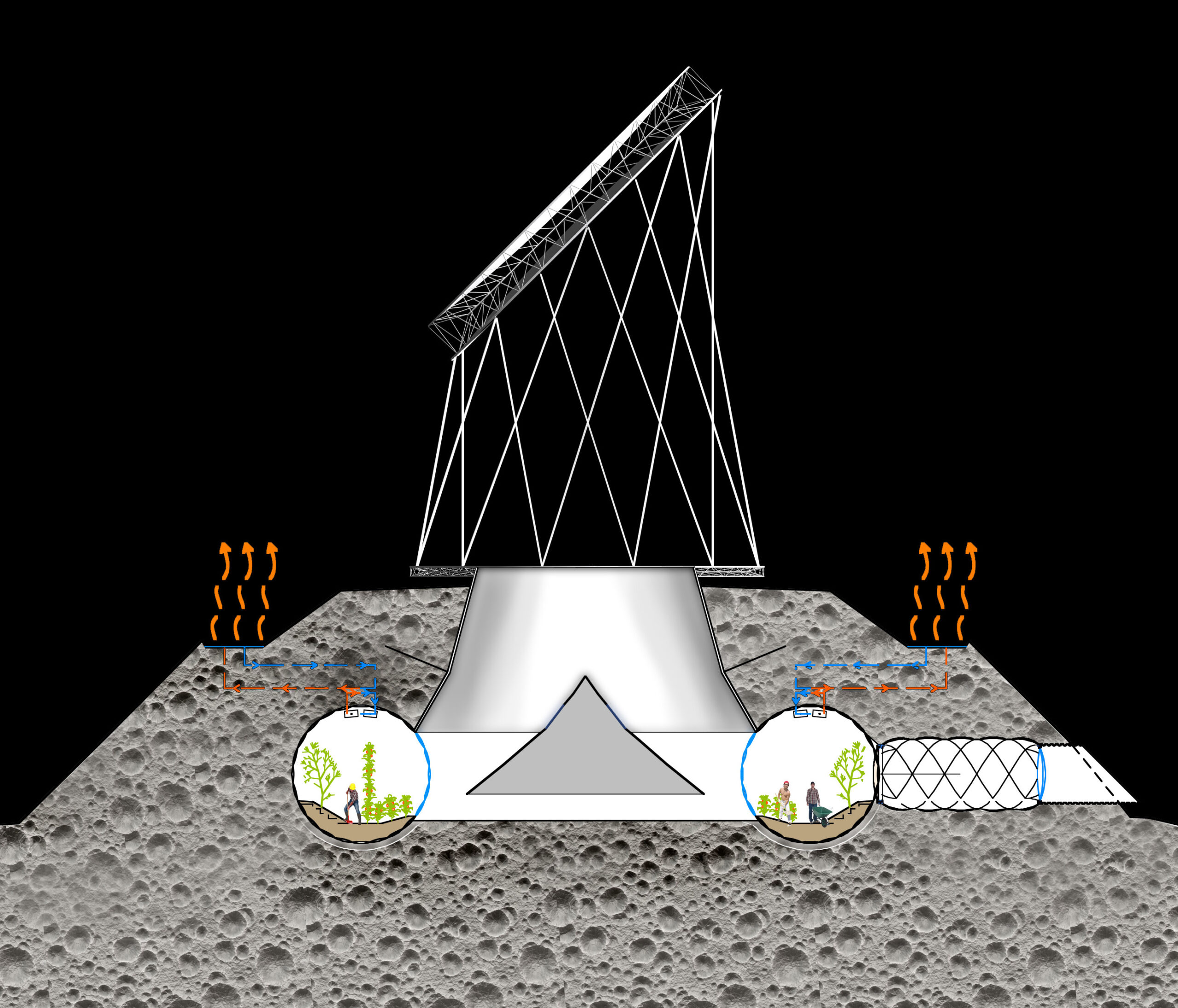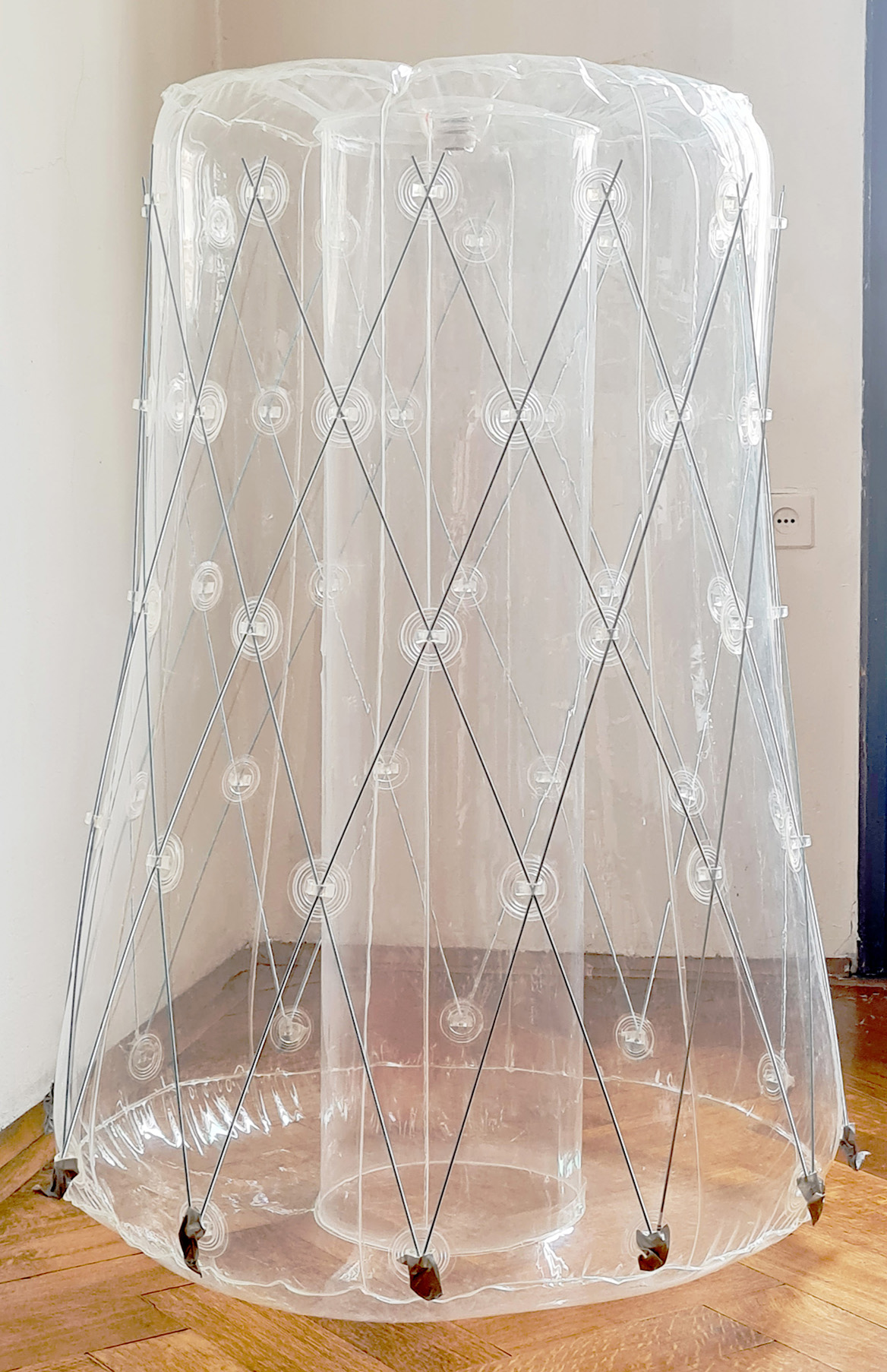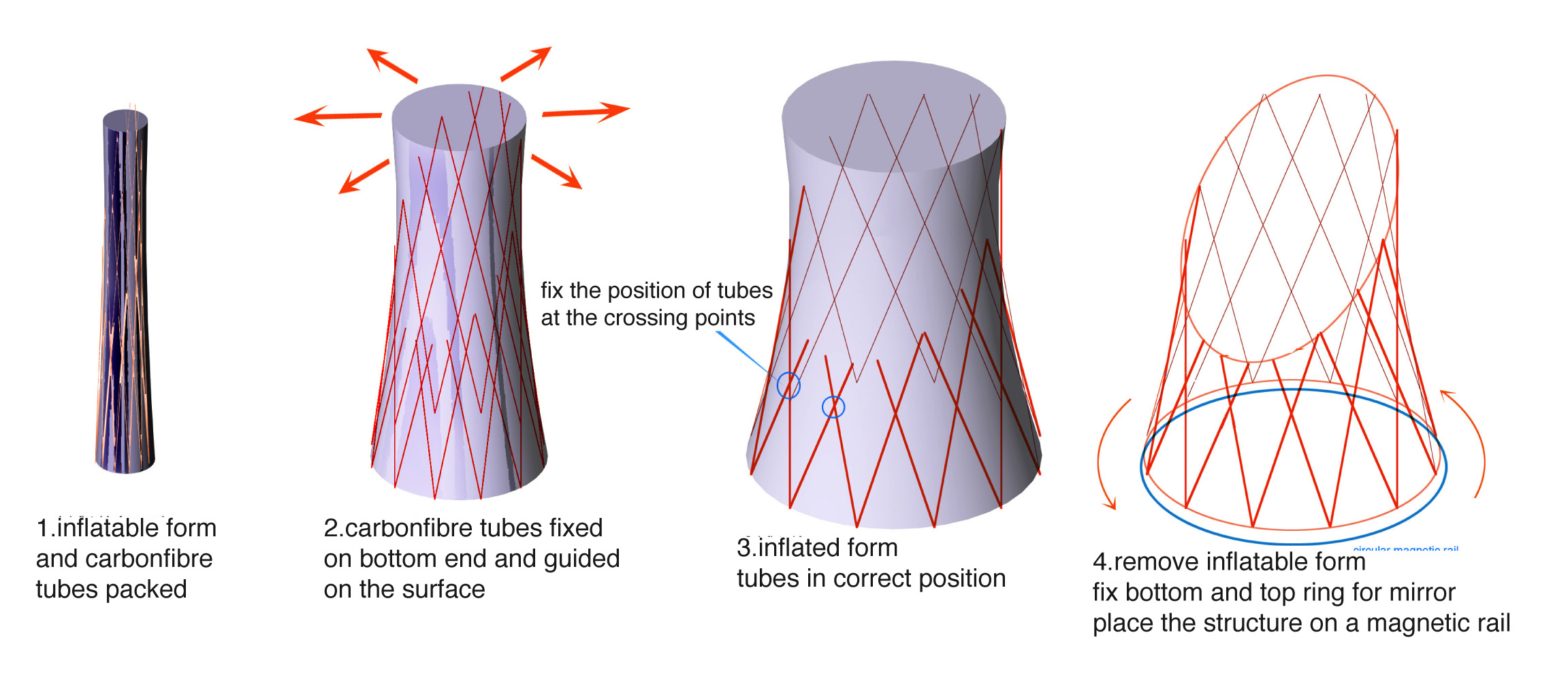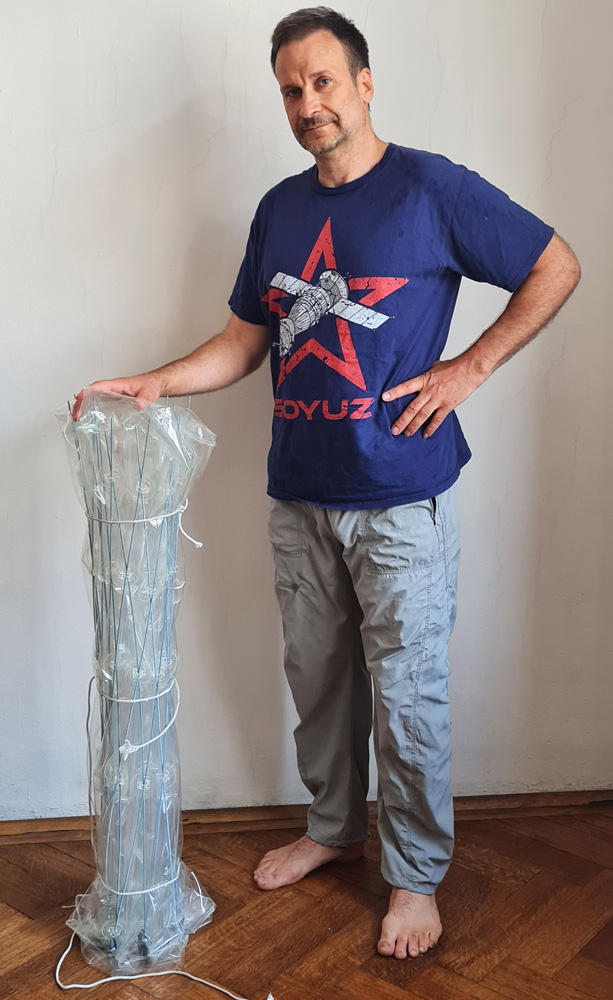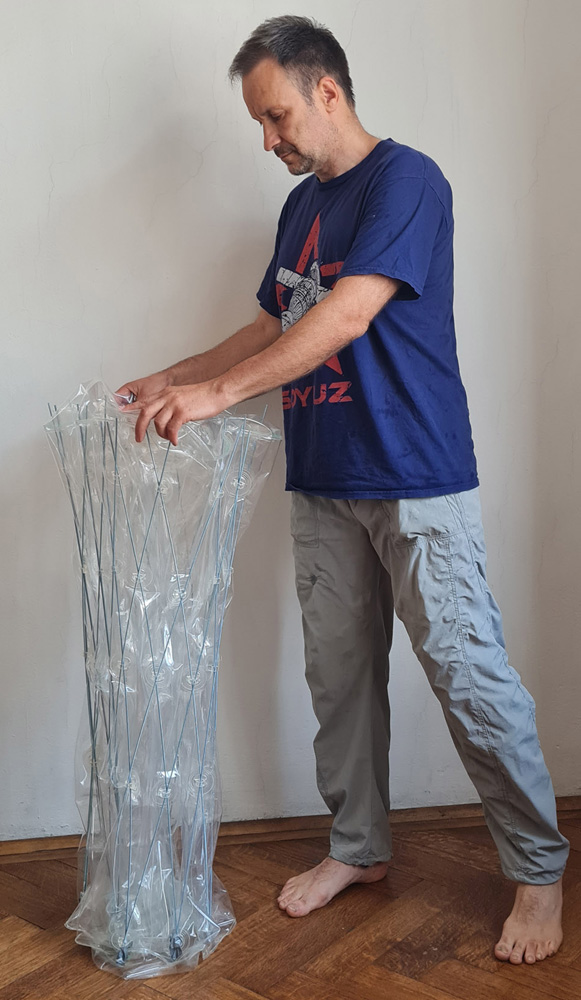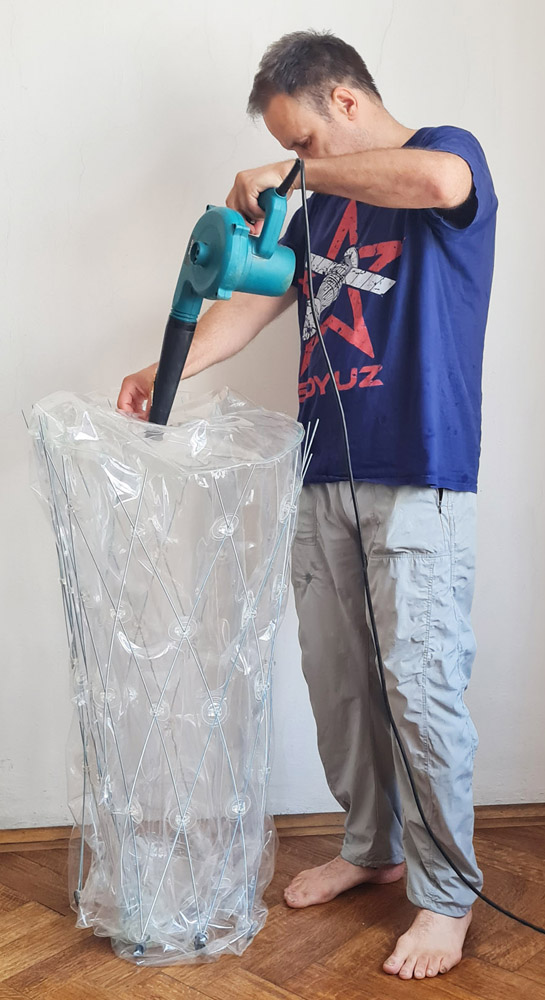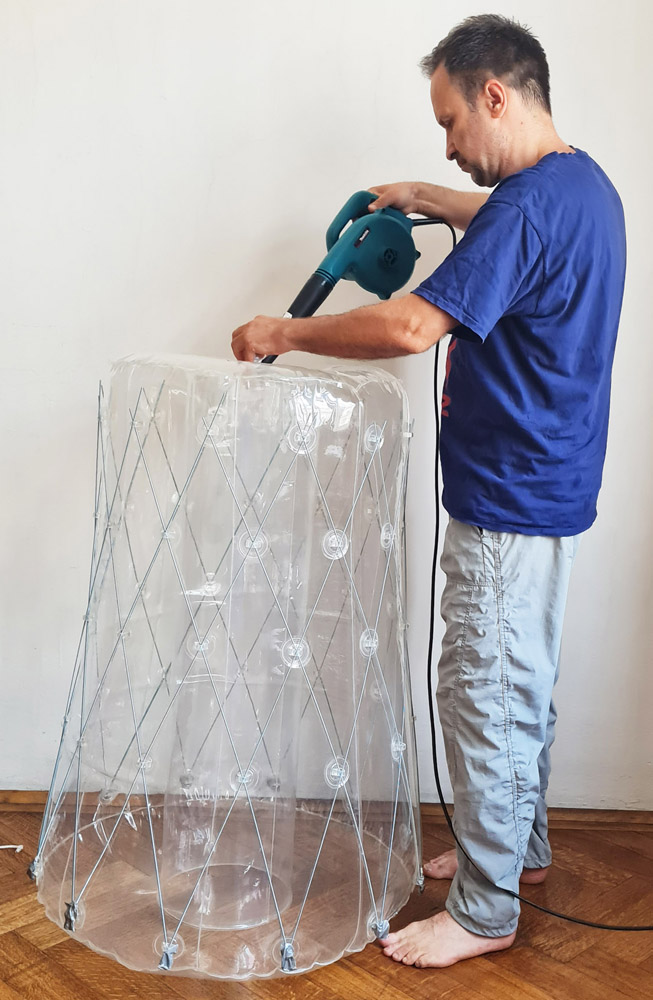5. Installation Process
1. Prepare construction pit. The upper 30cm layer of soil, that can get into contact with the membrane structure needs to be filled with smoothened regolith.

2. According to the conclusions from WP6, Mylar membranes or TPU membranes are considered for the inflatable structure. In case TPU is used for the membrane structure, we need to provide a temperature environment warmer than -40°C. Because TPU should not be bent or folded at less than -60°C. This can be achieved by spanning a very thin double-layered Mylar-Membrane over the construction site. Sunlight is reflected into the construction space and a part of infrared radiation is reflected back to the ground by the membrane. In further consequence the infrared radiation is reflected several times between the ground ant the membrane cover. This way we create an environment with a mostly equally distributed higher temperature under the cover. In case Mylar membrane is chosen for the inflatable structure, we would not need to create an environment of higher temperature, because Mylar remains flexible from 3°K on.
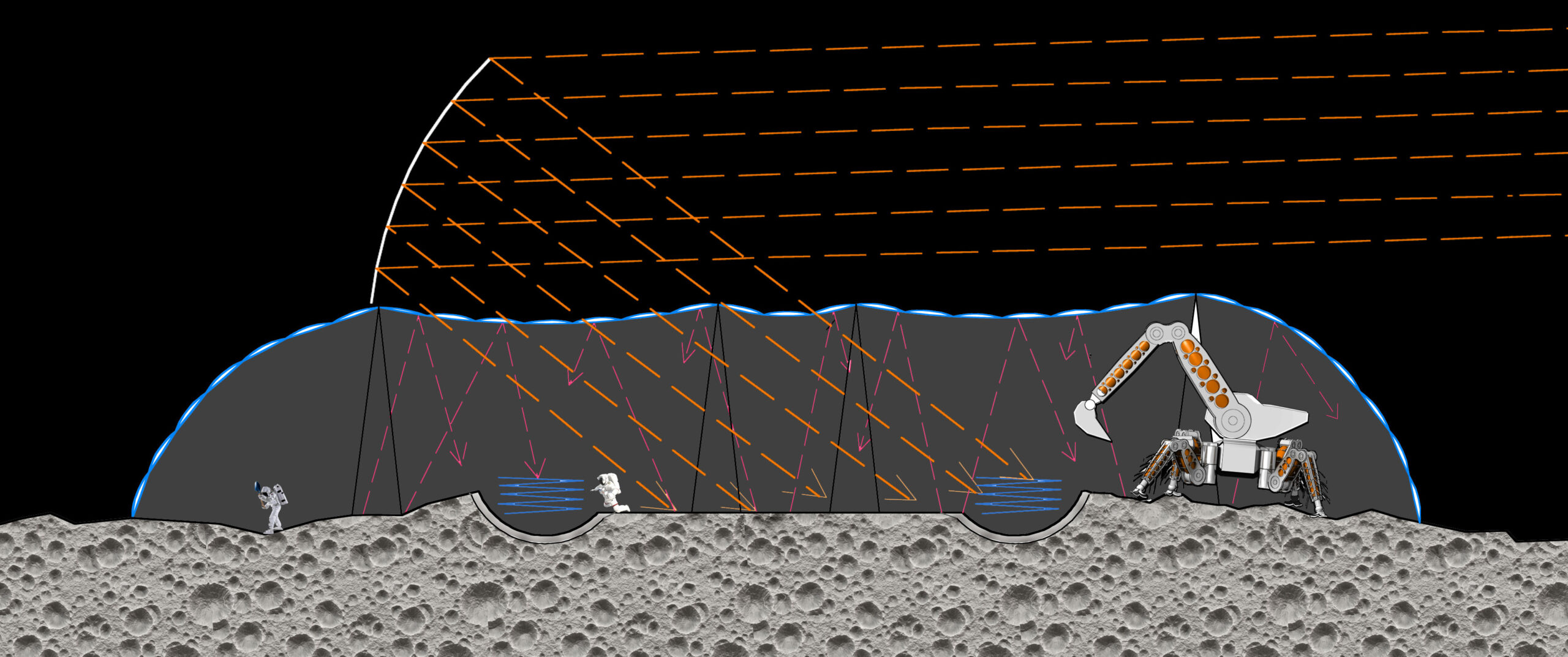
3. Smoothened regolith is filled inside. Inside the greenhouse it will be transformed into fertile soil. In the other rooms it is filled into bags and is the base for the floor. The weight of the regolith also helps to stabilize the inflatable structure in its place. Without that ballast, the ultra-light structure would be buoyant, like an empty bottle in water, when loose regolith is backfilled around it.
Excavators shovel the regolith into the membrane structure through the opened doors. Workers in space suits and/or robots shovel it further inside.
The inflatable structure is inflated with 1.5 pascal (0.0015 % of atmospheric pressure) This is sufficient to hold the weight of the membrane but also low enough that very little air escapes trough the open doors, while new regolith is poured in.
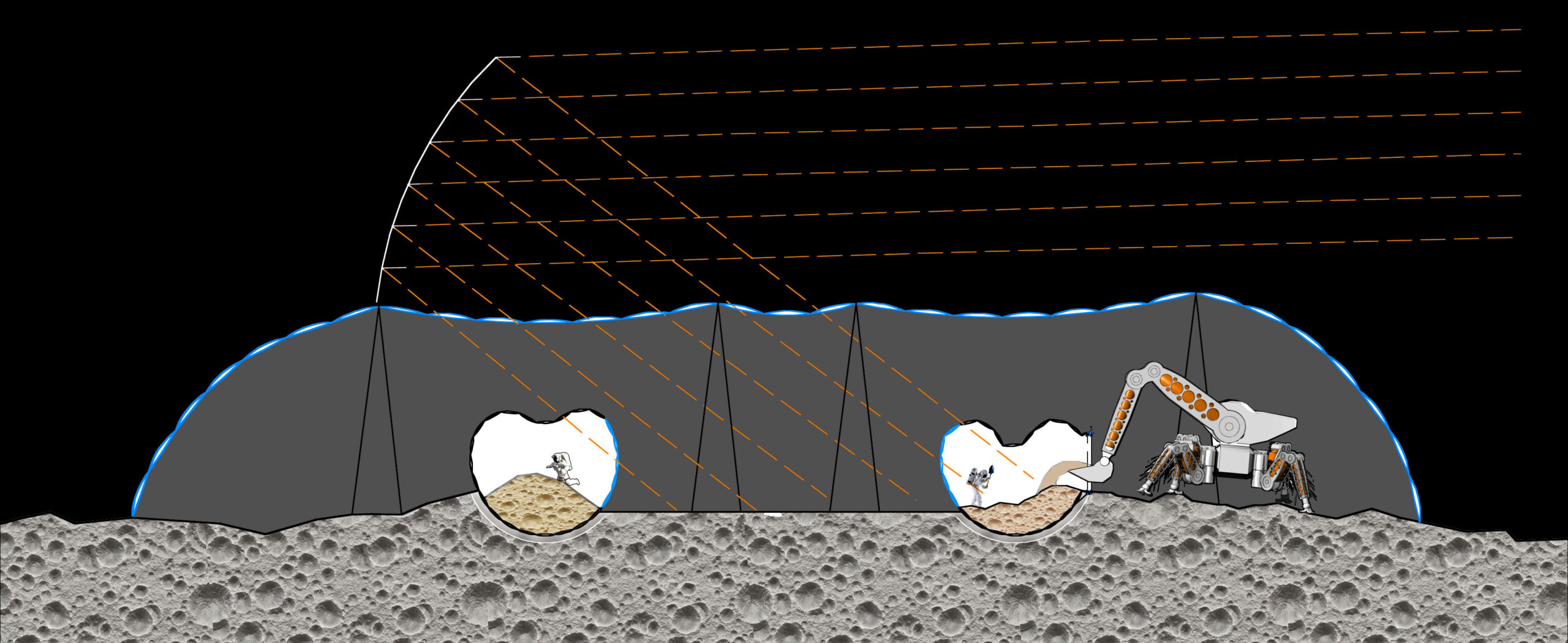
4. The excavators dump regolith on the fully inflated structure. The crew members can now work inside with normal air pressure and a comfortable room temperature.

5. The truss parts for the mirror tower are connected to an inflatable form and packed in a thin package. This package will now be inflated

6. Due to the inflated form, the CFRP- tubes are brought into the correct geometric position and fixed at the crossing points.

7. The lower truss ring with the magnetic rail and the upper oval truss ring with the mirror foil are assembled from modules and connected to the CFRP- tubes.

8. The truss frame tower is brought into the vertical position and carried up the artificial hill. The mass of the entire tower is approx. 400kg. In lunar conditions, that’s like 66 kg on Earth.
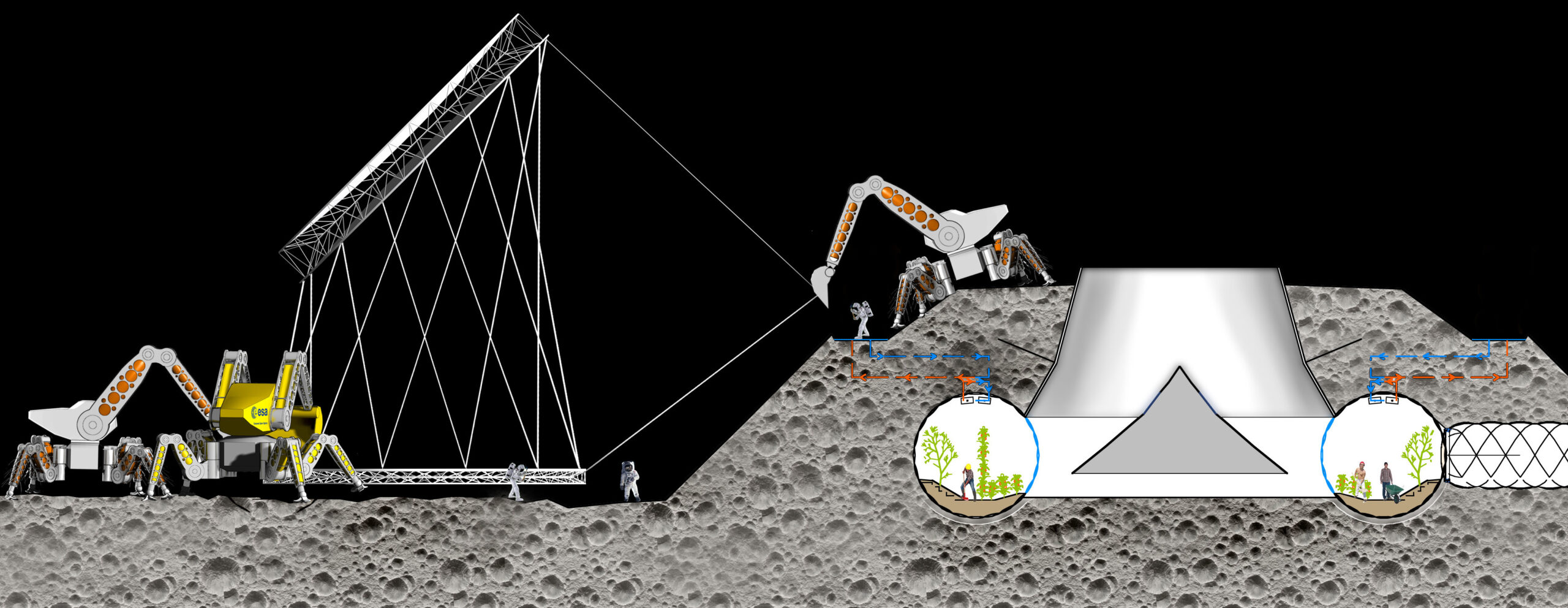
The installation time of the mirror structure needs to be kept short: With an inflatable form we can pack the carbon tube structure into a small volume and quickly bring them into the correct geometry by inflation.
